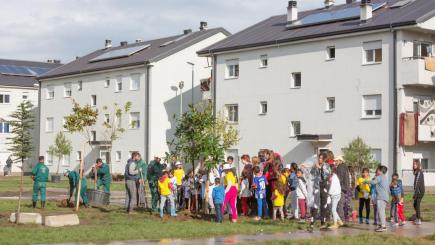Contact details
Submitted by:
U.S. Agency for International Development (donor)
Email:
Nina Papadopoulos, Team Lead Education in Crisis and Conflict - [email protected]
Website: eccnetwork.net/
Introduction to the project
Country
Global
Piloted in Jordan, Lebanon, Somalia, Honduras, Philippines, Uganda, El Salvador and Liberia.
Duration
2015 - ongoing
Description
The toolkit serves to rapidly assess a variety of risks to safety within learning environments to help design and adapt projects to help overcome those risks.
Project aims
In contexts where learners are integrated in host country schools, assessing then addressing the safety concerns for all learners will improve the quality of education for host and refugee learners alike. (Objective 1: Ease the pressures on host countries)
If refugees’ learning opportunities are not safe, then they won’t participate in them at all, or will take unacceptable risks to do so. By improving the safety of refugee learning experiences, the SLE tool improves the likelihood that refugees will access the learning opportunities available to them. (GCR Objective 2: Enhance refugee self-reliance)
The SLE Toolkit can be used in any context. Applying it in countries of origin would be useful not just for those who remained in-country, but also for refugees who may wish to return since access to safe and quality education in the country of origin may be a deciding factor in their desire to return. (GCR Objective 4: Support conditions in countries of origin for return in safety and dignity)
Resources used
USAID supported the development, piloting and refinement of this tool, without which it would not have been possible.
Main activities of the Good Practice
The SLE Toolkit supports partners to better understand the situation of learners and school personnel in complex and volatile contexts, and to be able to do so rapidly and with junior researchers and/or in-house M&E staff. Having data to assess the extent to which a learning environment is safe or unsafe—and to identify the particular risks at play—is critical for program design, adaptation, and implementation. Multiple types of data can serve specific purposes, and this toolkit allows users to conduct a quantitative, qualitative, or mixed-methods exercise, depending on their particular needs.
Partners
The toolkit development was led by the USAID Education in Crisis and Conflict Network (ECCN) community of practice (implemented by Education Development Center and University of Massachusetts Amherst), with detailed review and contributions from the USAID Education in Crisis and Conflict (EiCC) team.
Seven ECCN member organizations piloted versions of the toolkit between 2016 and 2018:
- Relief International (Jordan);
- World Learning (Lebanon);
- Mercy Corps (Somalia);
- Childfund (Honduras and Philippines);
- Advocacy for Child Relief (Uganda);
- Glasswing International (El Salvador);
- Education Development Center (Liberia)
Challenges and how they were overcome
Challenges: The main challenge was in creating a research toolkit that achieved the correct balance between practicality and rigor.
How challenges were overcome: Three separate versions of the toolkit were piloted in nine countries with very distinct risks to safety so as to arrive at the final version that was considered to be the most practical yet rigorous.
Results of the Good Practice
- Though the final version of the tool is fairly recent (mid-2019), there is clear potential for its use in refugee and/or host community contexts.
- Three piloting teams used versions of toolkit in refugee contexts (ACRUG Uganda; World Learning Lebanon; Relief International Jordan) and were positive about the impact it had on their programming both in terms of its ability to tell them more about each unique, and rapidly changing, context, but also in its accessibility for junior researchers including in-house staff.
Next steps
The SLE Toolkit will be further shared and implemented by others working in crisis and conflict contexts, and that the reports generated from individual SLE Assessments will be shared more broadly, for partners to have a wealth of information about contexts in which they work or will work in future.




